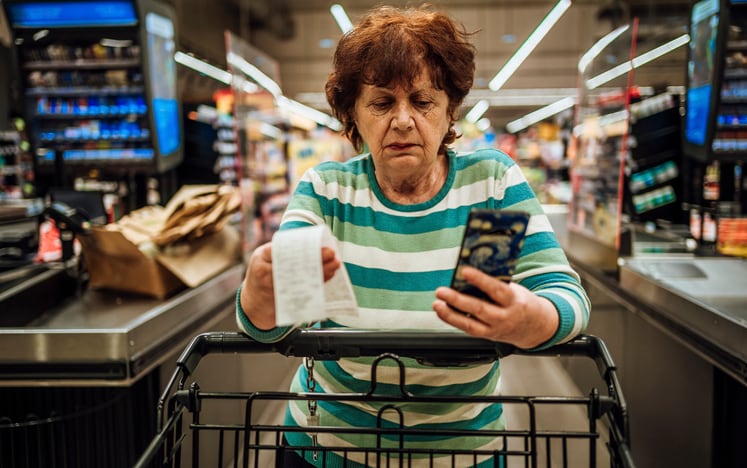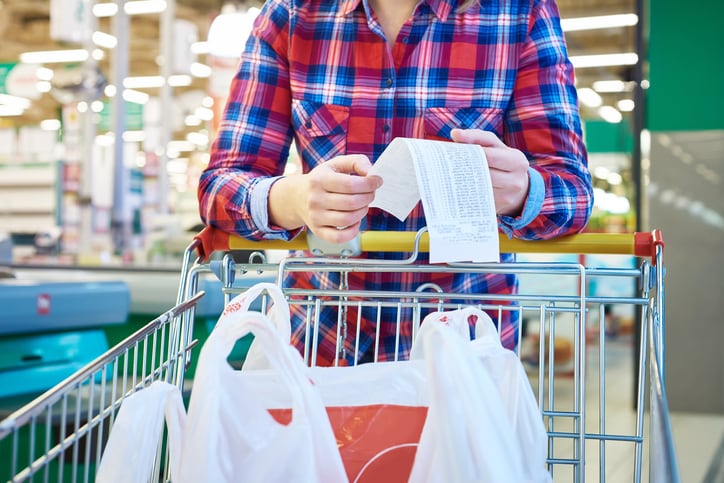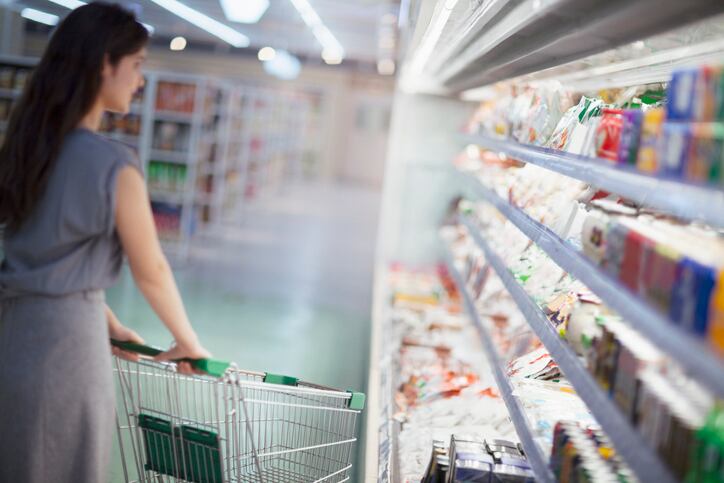While the private label food and beverage market has experienced significant success over the past 30 years, the pandemic ushered in a period of stunted private label growth.
William Blair analysts attributed the change to consumers’ shifting shopping habits. With an increase in online shopping - and extra stimulus money lining their pockets - consumers reached for national brands.
“Historically, private label hasn’t been well-merchandised online, and the value proposition for private label isn’t as clear for consumers online vs. when they can compare two products side-by-side on a shelf,” according to William Blair’s latest Food for Thought 2022 report.
Private label manufacturers - which typically manage more SKUs than national brands - were also disproportionately impacted by supply chain interruptions during the pandemic.
When inflation began its ascent in 2021-2022, there was a large price gap between national brands and private label products as national brands were able to adjust their prices faster than private label producers.
“Brands have this advantage for a few reasons, including the ability to alter promotion frequency and depth as well as fewer SKUs on which to negotiate prices with retailers,” according to the William Blair report.
Chu-An Lee, a director with William Blair, explained to FoodNavigator-USA that national brands also streamlined their manufacturing toward the highest volume SKUs.
Brands were “able to be more nimble to react to changes both in pricing and manufacturing relative to private label, which struggled during the pandemic,” he said.
But in 2022, the tide began to turn for private label, with high inflation and increasing interest rates hitting consumer budgets just as the “influence of stimulus money” wore off, leading shoppers to search for value and less expensive options.
“The trade-down cycle is reasserting itself, and private label is making gains relative to national brands,” according to the William Blair report.
Inflationary concerns, “plus economic uncertainty, lower consumer confidence and the lack of more stimulus money will keep driving consumers to private label brands,” Lee said.
Shift toward value
Low- and middle-income consumers in particular are switching to less expensive options and are reaching for value-driven retailers. According to the report, they are trading down for food and household staples, which favors club stores such as Costco or Sam’s Club and discounters such as Aldi or Walmart that feature a healthy private-label product mix.
While lower income consumers trade down quicker to private label than higher income consumers, they both begin a switch to private label around the same time, William Blair analysts said.
Products in commodity categories, such as water, coffee, tea, condiments, canned fruit, vegetables and dairy, as well as those in temperature states, such as frozen baked goods, have comprised most of the trade-down activity thus far.
“These products tend to have the greatest price elasticity, which means unit sales fall as prices rise,” per the report.
However, in product categories where brands matter more to consumers, shoppers have not traded down. Those categories - considered inelastic as demand remains constant despite economic changes - include sports and energy drinks, candy, snacks and fresh food.
In the long term, private label food and beverage growth is driven by demand from consumers seeking value, enhanced consumer perception compared with branded products and expanded retailer initiatives, according to the investment banking firm. Private label brands have historically made their biggest market share gains during recessionary periods.
Bullish on M&A
William Blair analysts said they are “bullish on continued private label food and beverage M&A activity in this coming year given the non-cyclical and nondiscretionary nature of many of these businesses.”
The analysts suggested in the report that demand could be spurred by larger food and beverage firms looking to broaden their private label offerings and financial entities looking to ride the private label wave.
“The brands that could be especially attractive for M&A are across a variety of food and beverage sectors for deals and opportunities we are tracking – in categories that include salty snacks, cookies and baked goods, crackers, dressings, sauces, ready meals and more,” Lee said.



